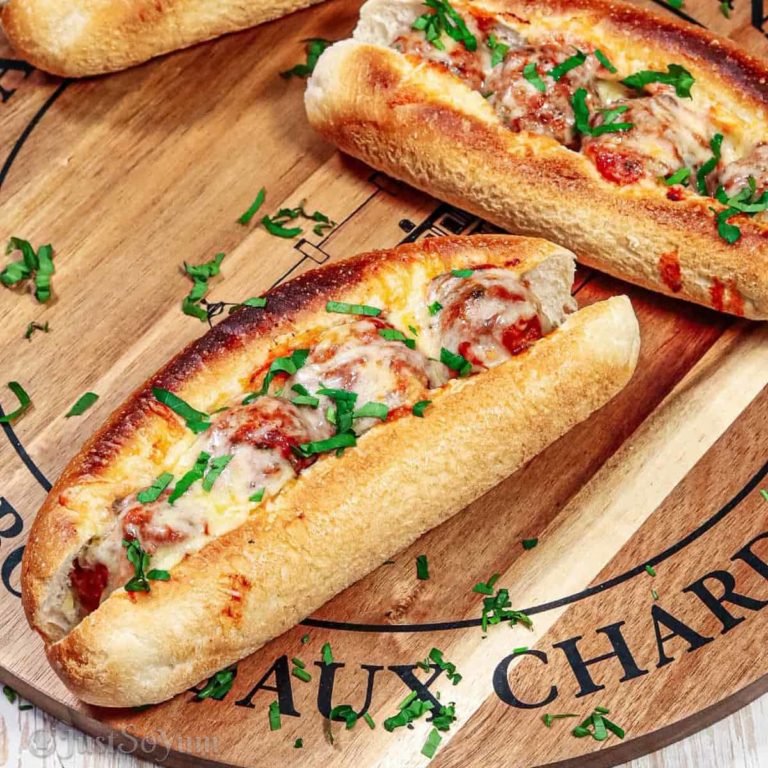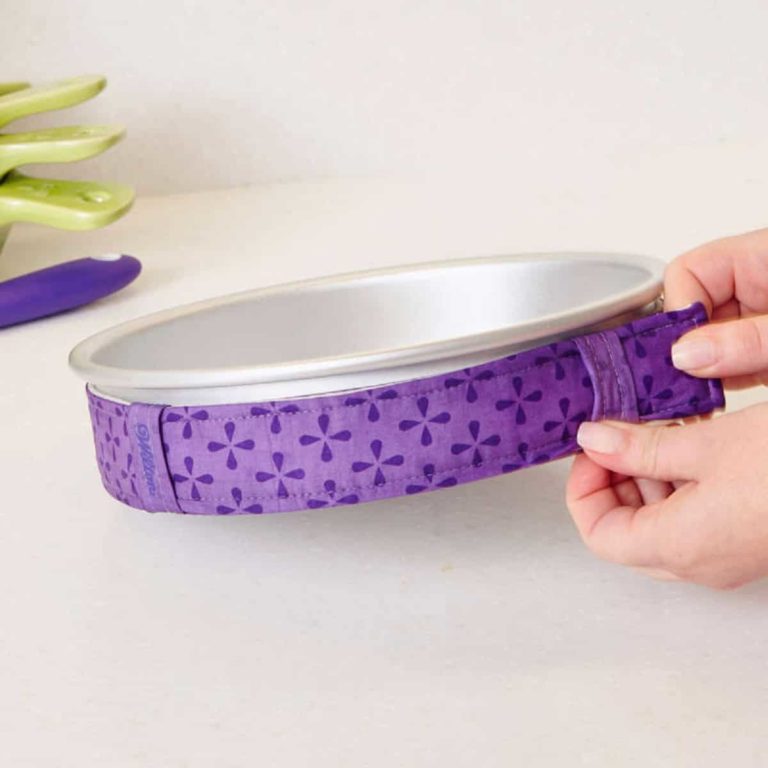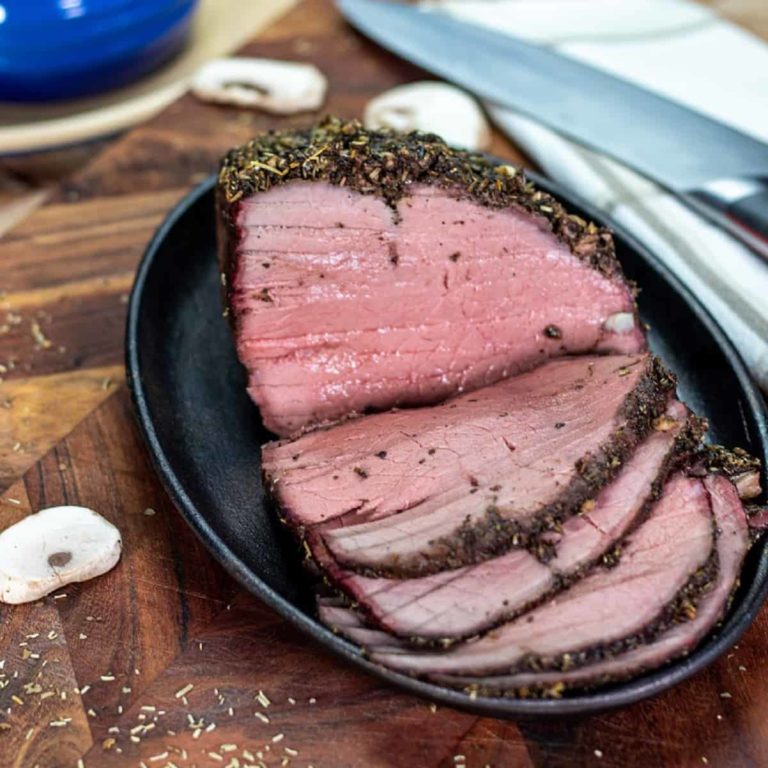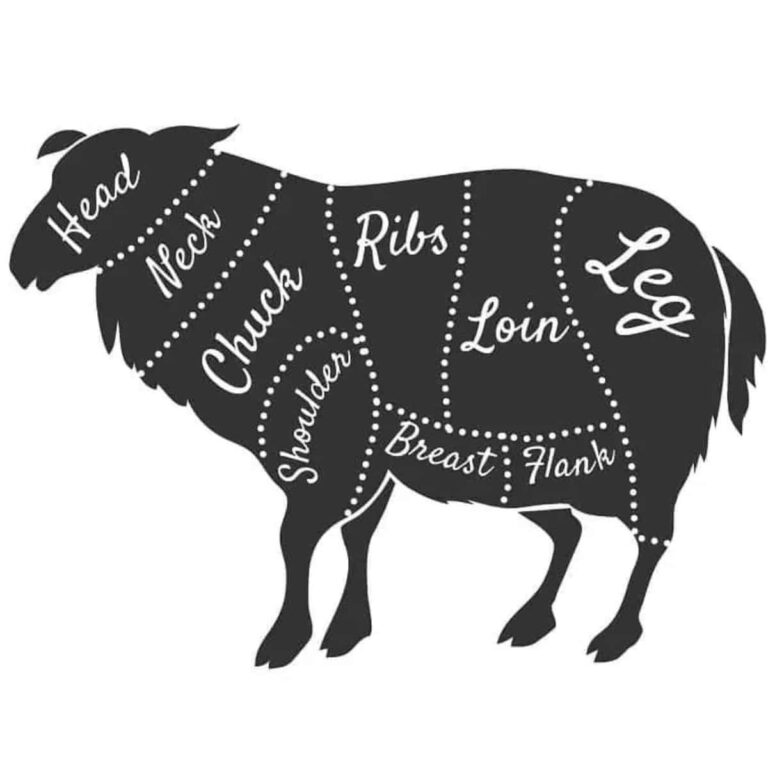Top 10 Essential Cooking Herbs For Your Kitchen
Over the years of cooking for my family, I have come to realise that there are some essential cooking herbs that you should always keep in the kitchen.
If you are anything like myself or my husband, there may be a time when you decide at the last minute to cook something different from what you had planned. And there is nothing worse than starting to cook only to find the recipe calls for a herb or spice that you do not have.

This week I want to go through the top 10 essential herbs that should be in every kitchen. No matter whether they are fresh or dried, having them on hand is always a benefit to your cooking.
Before we dive in, let go through some need-to-know information about essential cooking herbs!
Which are the best, Fresh or Dried Herbs?
To be honest, it doesn’t matter too much whether you choose to use fresh or dried herbs. It comes down to what you prefer and your situation.
If you grow herbs in your garden, then it is a bonus, to be able to have fresh on hand when they are in season. Or you may know a friend or family member who grows them, and you can grab some when you visit.
But sometimes it is great to have a backup of the dried herbs in case you are unable to get what you need.
When you watch professional Chiefs on T.V, you will always see them using fresh herbs, and I can’t blame them. The colours are vibrant, the aroma that fills the area while chopping the herbs and the smell they leave on your fingers is so much better than onion!
But even the professions used dried herbs when fresh is not available to them.
So which is best, you ask? Well, either is better than the other. You may have been thinking the fresh herbs would be better than dried, fresh is always better, isn’t it?
In this case no! And here is why!
Fresh herbs have a short shelf life, where dried have a shelf life of up to six months. This means that dried herbs can hold their flavour for up to six months when stored correctly.
Dried herbs can be added throughout that cooking process as the exposure to the heat and moisture during the cooking process draws out the flavour from your essential cooking herbs where the fresh herbs are usually added more towards the end of the cooking process or just used as a garnish.
Your dried essential cooking herbs are more concentrated in flavour than your fresh, so there is always an essential thing you need to remember when you’re choosing which to use.
For every tablespoon of a fresh herb that a recipe asks for you use one teaspoon of the dried version or the other way around. But what if the recipe calls for a cup of a fresh herb. Rember, the rule of three, 1/3 cup of dried herbs, equals 1 cup of fresh or one teaspoon of dried herbs is equivalent to 1 tablespoon of fresh. However, it can come down to taste with this also.
For example, if a recipe calls for 1 cup of fresh Basil, but you are going to be using dried Basil instead, and you feel that 1/3 cup may be too much, try doing a 1/4 cup and increase slowly from there until you get the right amount of flavour.
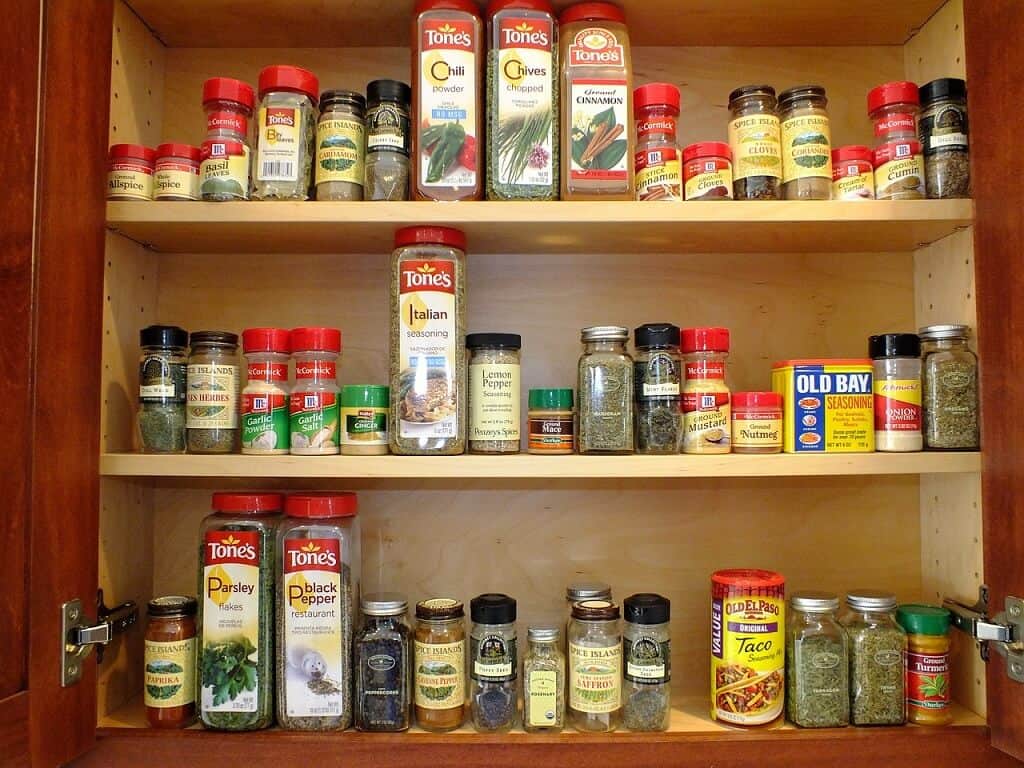
How to store your essential cooking herbs?
No matter what kind of essential cooking herbs you get, there is ways to store them correctly.
If you have brought your herbs from the supermarket, you may have a few options of how they come. Here in Australia, we can buy our dried essential cooking herbs in glass jars and packets. If you buy them already in a jar, which I prefer then what to store them in is sorted, but if you buy them in a packet, you will need an airtight container or jar to store them in. Then keep them in a cupboard or a dry area of the kitchen.
If you are one to buy fresh or you are lucky enough to get them directly from a garden. You can store your herbs in a jar of water with the leaves sticking out, which is more suited to your leafy herbs such as Basil or coriander. Or you can store any kind of fresh herbs between pieces of damp paper towel, and place all this in a ziplock bag. Both methods must be kept in your refrigerator.
How do I clean my fresh essential cooking herbs?
It doesn’t matter if you have brought them from a store or got them from your herb garden. You always need to wash them before you use and store them.
Fill up your sink with cold water and place your herb in the water. Gently move them about for a minute or two and then remove them.
If you are washing herbs such as Mint or Basil, you can give them a light shake to remove the excess water from them and pat them down with a paper towel. But if you are washing more delicate herbs such as Dill or Parsley, handle with a bit more care.
Top 10 Essential Cooking Herbs.
The list of essential cooking herbs below is the ones that are the most commonly used within a household recipe. I recommend always having the dried herbs on hand at all times, but if you feel like using fresh, buy or pick as needed to avoid too much waste.

1. Basil
This essential cooking herb is right up there in my list of favourite herbs to cook with. It is used around the world in all kinds of cuisines. Basil is a part of the Mint (Lamiaceae) family and originates from Central Africa to Southeast Asia.
There are a few varieties of Basil, such as Lemon Basil, Thai Basil, and Sweet Basil.
Basil is an essential herb when making sauces such as pesto or other Italian sauces. But can be used to sprinkle over the top of your pizza, make a marinade for your meats, a salad, or be added to stir-fry vegetables. And pairs well with Garlic, Tomatoes, Olive Oil, Balsamic Vinegar, Fruit, Mint, Lemon, and Eggplant.

2. Thyme
Another relation to the Mint family, but also the Oregano (Origanum) family, and originates from Eurasia.
Fun facts, Thyme was used by the Ancient Egyptians for their embalming, and the Ancient Greeks used Thyme in their baths as well as burning it in their temples as they believed it was a source of courage.
Thyme goes well in some Italian sauces but is the primary herb use in lots of soups and stews. It is also great for seasoning poultry or adding to sauces for fish. It also pairs well with Tomatoes, Potatoes, Eggs, Garlic, Lavender, any kind of meat, Nutmeg, Oregano, Parsley, Rosemary, and Onion.

3. Rosemary
When you are considering any type of essential cooking herbs to keep stocked, Rosemary has to be my number one herb for any home cook. I cook with this just as much as I do Basil and my husband loves to use this with his lamb roast.
Rosemary also know as Salvia Rosmarinus, is not just great to have as a herb, but if you are looking for a hardy plant to grow in your garden, this shrub can withstand quite a lot.
It is excellent to use when cooking roast veggies or meat dishes as a seasoning or add it to soups, casseroles, salads, and stews. Pair it with Lamb, Chicken, Pork, Potatoes, Pumpkin, Garlic, Basil, Onions, and Bay Leaf.

4. Coriander
Also known as Chinese Parsley. The leaves from the Coriander plant are the herb part of the plant, where the seeds are the spice part, which puts this as both an essential cooking herb and spice.
The herb part of this plant can be added to foods such as chutneys, salads, salsa, guacamole, as well as garnishes for soup, fish, and meats. And pairs well with Garlic, Lemon, Lime, Chiles, Onions, Basil, and Mint.

5. Chives
Allium Schoenoprasum is the scientific name for Chives, and even though Chives are a culinary herb, it is closely related to Onions, Garlic, Shallots, Leeks, and Scallions.
Another of my favourite essential cooking herbs to use and can be added to dishes as a garnish. Foods such as salads, vegetable stocks, soups, creamy sauces, and omelettes are perfect for adding Chives too, all you need to do is put them in just before serving.
Fun fact, the flower from the Chives is also eatable and can be used in salads as a garnish.
Chives can be paired with foods such as Avocados, egg dishes, Fish, and Potatoes, and goes well with Basil, Fennel, Parsley, and Tarragon.

6. Oregano
Another of my favourite essential cooking herbs. And like Basil, Oregano is a part of the Mint family but also related to Marjoram. Its green leaves are full of flavour, but dried Oregano can sometimes have a much stronger flavour than fresh.
This herb is essential to a lot of Italian cuisines and favoured to use with vegetables, meat, and fish, especially when they are roasted, grilled, or fried.
It pairs well with Olive Oil, vinaigrettes, and marinades for meat dishes and goes well with Garlic, Basil, Onion, and Thyme.

7. Parsley
This herb can sometimes be mistaken as just a garnish. But don’t underestimate the flavour of Parsley in your cooking. Adding this to your salads, sauces, and marinades will add to your overall flavour, but cooked into dishes likes quiche and soup will create a fantastic taste for your meal. I have even added it to my sausage roll mix on the odd occasion.
Curly Parsley is one that is more used herbs for garnishes on dishes, where the Flat-Leaf Parsley has a more robust flavour and is more suited to cooking.
Parsley is what I would consider an all-around herb. It can pair well with so many different types of ingredients such as eggs, fish, Lemon, lentils, rice, tomatoes, most vegetables, Basil, Chives, Garlic, Mint, Oregano, Rosemary, Tarragon.
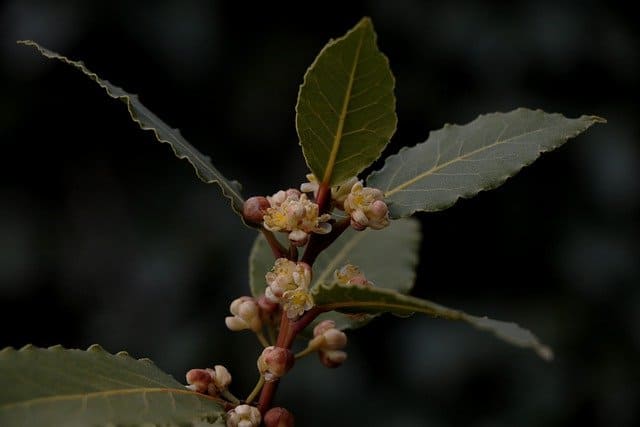
8. Bay Leaf
It’s not one of my most used herbs, but it is a must to have on hand for when I am cooking certain sauces, soups, and stews.
Fun fact about the bay leaf, scatter them in your pantry to repel meal moths, flies, cockroaches, mice, and silverfish.
The most commonly used Bay leaf is the Bay Laurel (Laurus nobilis) because of its distinctive flavour and fragrance. When cooking with this one, it is more common to add the leaves whole during the cooking process and then removing them before serving. It allows the flavour to be added to the food while cooking without having to consume the leaf.
Fresh leaves are mild in flavour, but once they are dried, they develop their full potential after several weeks of drying.

9. Mint Leaves
Also known as Mentha, can be quite handy to have when you are want to cook Lamb. A mint sauce over the top of roast Lamb is divine and adding mint leaves to your peas while they cool will give them a minty taste. But if you are one not to cook with mint, just growing it will provide you with a lovely smell in your garden.
Use in sauces, salads, even adding mint to savoury dishes is just the start, and pairing mint with many other herbs such as the ones listed above will add to your meals.

10. Marjoram
This herb is native to a few places such as Turkey, the Mediterranean, and Western Asia.
Mostly used in tomato-based dishes, but it can also be used to season roast vegetables and meats, as well as adding it to stuffing mixes, sausages and added to soups, stews, and casseroles. This herb is pairs well with Garlic, Tomatoes, Basil, Lamb, Veal, Beef, Pork, Chicken, and seafood.
How can I dry my herbs at home?
If you buy fresh herbs or your herbs are ready to be harvested from your garden, but you have too much to use and store. Then you can dry them at home so that you can avoid waste.
There are two ways that you can do this. Hanging your herbs upside down inside, if you have the room, or drying them in your oven or microwave.
To help you with how to do these two methods, I have included a link to an article from Beter Homes and Gardens on “How To Dry Fresh Herbs“.
Do you have a favourite herb you like to cook with? Feel free to share it with us in the comments below.
Or check out some of our recipes that use some of the herbs that are listed above, Easy Cheesy Meatballs with Spaghetti or Super Crunchy Weber Q Roast Potatoes

